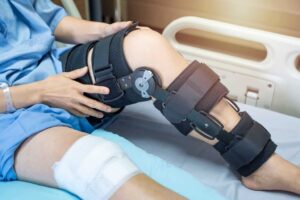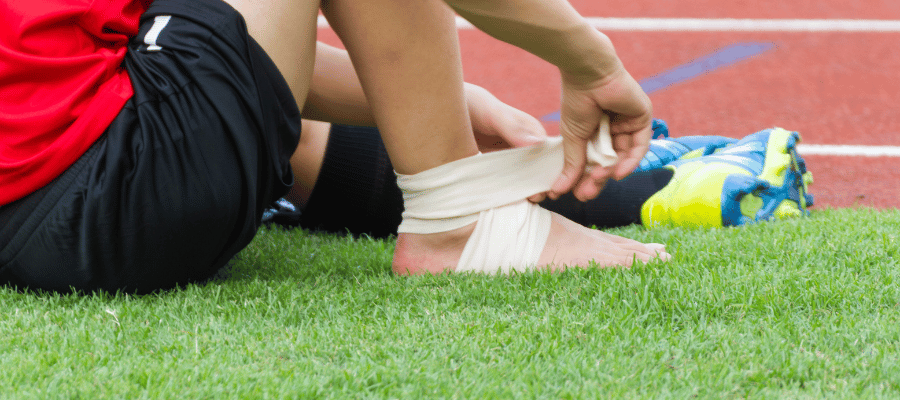Mobility Mastery: Regaining Movement Post-Surgery with Rehabilitation
Introduction
Recovering from surgery is more than just resting; it’s a critical period where the right rehabilitation plan can make all the difference. At Arunalaya HealthCare, we understand the importance of a well-structured rehabilitation program to help patients regain strength, mobility, and confidence. Whether you’re searching for a physiotherapist for home visits in Patel Nagar, looking for advanced physiotherapy in Delhi, or need specialized care at our physiotherapy center in Delhi, our comprehensive post-surgical rehabilitation programs are designed to guide you through every phase of recovery. This blog will walk you through the essential phases of post-surgical rehabilitation, explaining how each stage contributes to your overall recovery.
Phases of Post-Surgical Rehabilitation
1. Immediate Post-Operative Phase (Days to Weeks)
Through passive range-of-motion exercises and early ambulation with assistive devices, patients can begin their journey to recovery with confidence. At Arunalaya HealthCare, our experts provide personalized care, whether at our physiotherapy center in Delhi or through physiotherapy for home visits in Inderpuri and other areas.
2. Acute Recovery Phase (Weeks 1-6)
As you transition into the acute recovery phase, the focus shifts to facilitating tissue healing, minimizing swelling, and improving joint mobility. This stage involves a gradual introduction of active range-of-motion exercises and controlled weight-bearing activities. Our specialized services, including physiotherapy in Pitampura and Punjabi Bagh, ensure that your recovery is on track with targeted interventions.
3. Intermediate Phase (Weeks 6-12)
During the intermediate phase, the goal is to increase strength, stability, and functional mobility. Progressive strength training, balance exercises, and functional activities that mimic daily tasks are introduced. Whether you’re recovering at home or at our sports rehab center in Patel Nagar, we tailor each program to your specific needs.
4. Advanced Rehabilitation Phase (Months 3-6)
The advanced phase focuses on enhancing overall strength, endurance, and specific functional abilities. This stage includes sport-specific exercises, plyometric training, and increased cardiovascular conditioning. At Arunalaya HealthCare, we provide advanced physiotherapy in Delhi, ensuring that you regain your full functional abilities with confidence.
5. Return to Activity Phase (Months 6 and Beyond)
As you approach the return to activity phase, the focus is on gradually resuming normal activities, whether it’s sports, work, or daily routines. We closely monitor your progress to prevent any signs of regression or complications, ensuring a smooth transition back to your active lifestyle.
6. Maintenance and Prevention Phase (Ongoing)
Our maintenance programs include home exercises for continued strength and flexibility, along with periodic check-ups at our physiotherapy center in Delhi. Long-term lifestyle modifications are also introduced to ensure optimal health and well-being.
Benefits of Post-Surgical Rehabilitation
Enhanced Healing and Pain Management
Post-surgical rehabilitation is crucial for reducing complications and optimizing tissue healing. Our programs focus on minimizing the need for pain medications through targeted exercises and therapeutic interventions. Whether you need chest physiotherapy near you or specialized pain management strategies, Arunalaya HealthCare is here to support you.
Restored Functionality and Prevention of Muscle Atrophy
Rehabilitation plays a key role in restoring joint flexibility, enhancing muscle strength, and preventing muscle atrophy. Our physiotherapists, available for home visits in Delhi, focus on exercises that rebuild weakened muscles, improve joint stability, and restore overall functionality.
Reduced Disability and Optimized Cardiovascular Health
Functional exercises tailored to daily life activities help reduce dependence on others, while gradual cardiovascular conditioning improves heart health and endurance. Our rehabilitation programs, available at our center and through home visits, are designed to enhance your overall quality of life.
Psychosocial Benefits and Risk Reduction
Rehabilitation also offers emotional support, helping patients maintain a positive mindset during their recovery. By addressing mobility and strength deficits, our programs reduce the risk of secondary complications and enhance joint protection, ensuring a safer, more effective recovery.
Individualized Care and Long-Term Maintenance
At Arunalaya HealthCare, we believe in personalized care. Our rehabilitation programs are tailored to each patient’s needs, ensuring that the exercises and strategies align with their specific surgical outcomes. We also emphasize long-term maintenance through continued exercise and preventive strategies to sustain the gains achieved during rehabilitation.
Conclusion
Post-surgical rehabilitation is not just about physical recovery; it’s about regaining your independence and confidence.
At Arunalaya HealthCare, we provide comprehensive rehabilitation programs that cater to each phase of your recovery, whether you’re at home or visiting our physiotherapy center in Delhi. With services like physiotherapy for home visits in Patel Nagar, advanced physiotherapy in Delhi, and specialized care in areas like Pitampura and Punjabi Bagh, we are committed to helping you achieve the best possible outcomes. Embrace your journey to recovery with Arunalaya HealthCare, and let us guide you towards a healthier, more active life.
physiotherapy for home visit in patel nagar | physiotherapy in pitampura | best physiotherapist in rajender nagar | physiotherapy in naraina | best physiotherapist in inderpuri | physiotherapy center in punjabibagh | physiotherapy in punjabi bagh| physiotherapy in karol bagh | sports injury centre in delhi | sports physiotherapist in patel nagar | sports rehab center in patel nagar | cp treatment | physio clinic near me in delhi | chest physiotherapy near me | advanced physiotherapy in delhi | best sports injury physiotherapist in delhi | best sports injury physiotherapy in delhi | sports physiotherapist in delhi | back pain physiotherapy near me | home visit physiotherapy in delhi | physiotherapy center in delhi | best physiotherapist at home in patel nagar | physiotherapy in patel nagar | physiotherapist in patel nagar




